Sensing/function | electronic ink division king Yan SAB | printing assembly oxidation stability MXene flexible device used in high-performance humidity sensing applications
QQ Academic Group: 1092348845
Detailed

MXene is a two-dimensional star material that is even more popular than graphene. As an advanced manufacturer of MXene, Beike Nano has launched special offers to offer 10% discount on mxene and other materials. At the same time, Beike Nano has launched new mesoporous materials and silicon aerogel products with more favorable prices. The
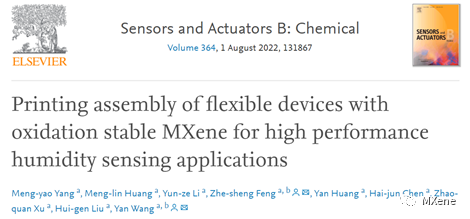
He: He has recently published a paper in the international journal Sensors and Actuators: Chemical Printing Assembly of Flexible Devices with Oxidation Stable MXene forHigh Performance Humidity Sensing Applications ". In this work, a sodium ascorbate surface modified MXene (SA-MXene) composite material is proposed, the good stability and oxidation resistance of functional ink based on the composite material is discussed, and the application of flexible devices assembled by screen printing technology in high performance humidity sensing is introduced.
The quick reference
Transition metal carbides and carbnitrides MXenes have been developed as attractive humidity sensitive nanomaterials due to the abundant hydrophilic active sites on their chemically active surfaces. However, the low stability exhibited by MXenes in humid air or water limits their long-term storage and wide application. This work presents a sodium ascorbate surface-modified MXene (SA-MXene) composite that combines ascorbate ions with Ti3C2TxMXene synthesized by the minimal dense layer stratification (MILD) process. Synthesis and modification of MXene with sodium ascorbate to obtain SA-MXene has been proved to be a feasible method to avoid oxidation of Ti3C2Tx MXene materials. The resulting SA-MXene composites were formulated as screen printing inks and showed high stability and oxidation resistance despite being stored at ambient temperature for 30 days. In addition, SA-MXene ink is assembled as a humidity sensitive layer on a fork-finger electrode fabricated by electrodepositless (ELD) process to form a flexible humidity sensor by screen printing technology. Thus, the SA-MXene sensor shows significant potential for humidity sensing, with an ultra-high relative capacitance response (131.4%, corresponding to 97% RH) and a fast response time over a wide detection range. This work represents a promising strategy for developing SA-MXene to fabricate highly sensitive MXene-based sensors.
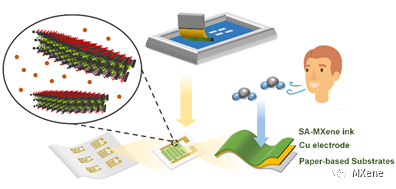
The main points
Research Points 1:
In this paper, SA-MXene composite material was obtained by surface modification of MXene with sodium ascorbate, which proved to be a feasible method to avoid oxidation of Ti3C2Tx MXene material. SA-MXene was further prepared into a functional ink suitable for screen printing, which still had high stability and oxidation resistance after 30 days of storage at ambient temperature.
Research Points 2:
The flexible SA-MXene sensor assembled by printing has shown good performance in humidity sensing, with ultra-high relative capacitance response, fast response in wide detection range and resistance to bending. The SA-MXene sensor can record humidity fluctuations corresponding to real-time monitoring of human speech and breathing, indicating that the fabricated humidity sensor has potential applications in humidity change-based monitoring systems.
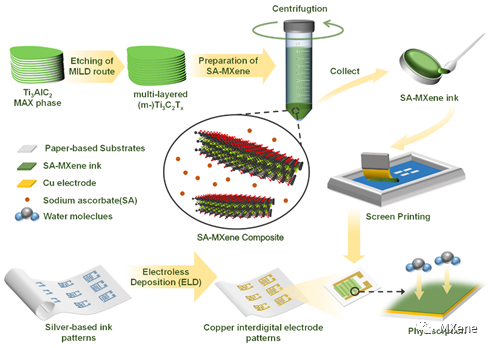
Figure 1. Synthesis of SA-MXene composite material and preparation process diagram of assembling humidity sensor on copper forked finger electrode pattern combined with screen printing.
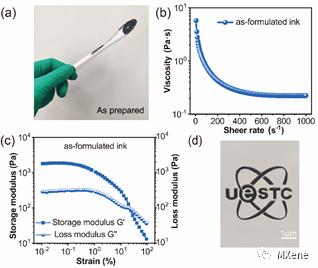
Figure 2. (a) Physical picture of SA-MXene ink prepared; (b)SA-MXene ink viscosity and shear rate function diagram; (c)SA-MXene ink storage modulus, loss modulus and stress diagram; (d) Patterns obtained by screen printing.
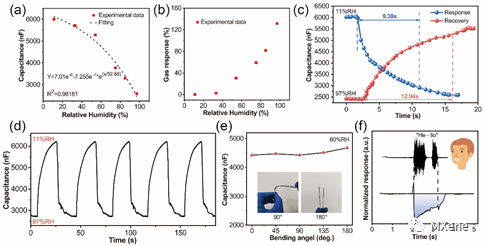
Figure 3. (a) Capacitance response of SA-MXene sensor under different humidity conditions; (b) The relationship between the sensitivity of SA-MXene sensor and relative humidity; (c) Response and recovery curves of SA-MXene sensor between 11% RH and 97% RH humidity conditions; (d) Dynamic response curves of SA-MXene sensor at 5 cycles between 11% RH and 97% RH; (e) Capacitance variation of SA-MXene sensor under different bending angles; (f) The SA-MXene sensor can monitor the humidity fluctuation of different syllables in real time while people are talking.
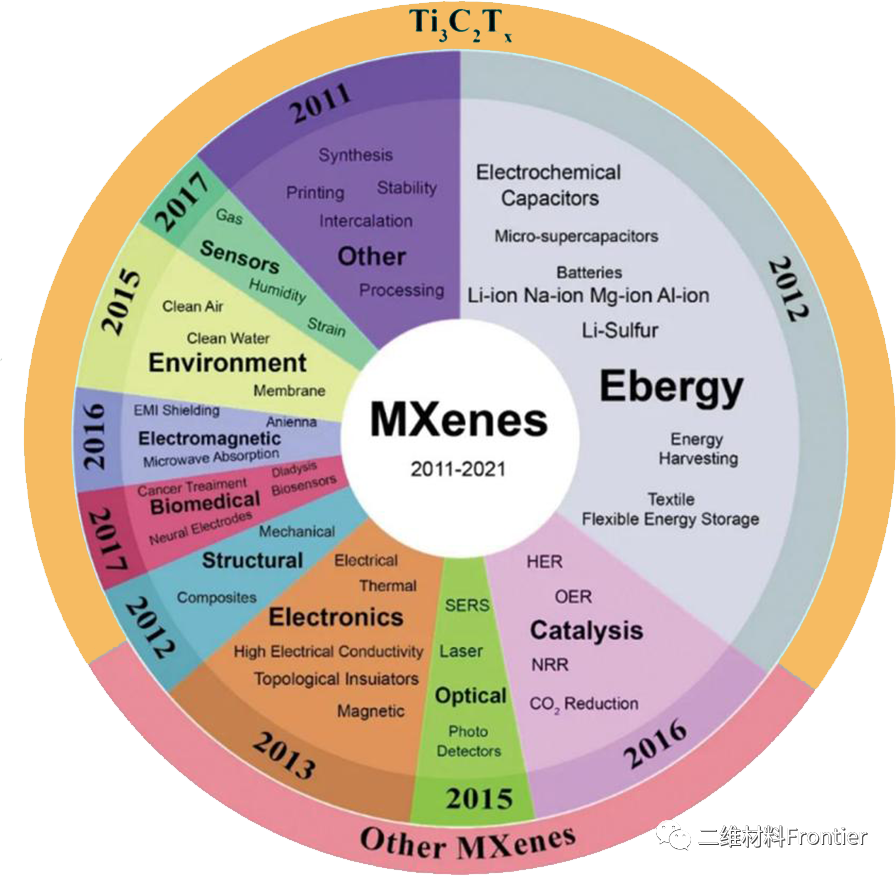

- Previous: Super capacitor | Chem
- Next: IF 14.1! Tumor-derived


 mxene academic
mxene academic
